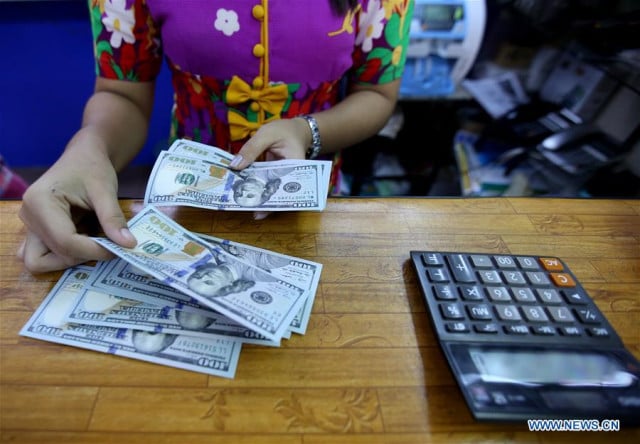Education in Cambodia during the Prehistoric Period: The Revolution of Nature and Imitation

- By Sereyrath Em
- March 14, 2023 9:53 AM
Cambodia, having a land area of 181,035 square kilometers (69,898 square miles), is bordered to the west and northwest by Thailand, to the northeast by Laos, to the east and southeast by Vietnam, and to the southwest by the Gulf of Thailand. This makes Cambodia roughly one-third the size of France and slightly larger than the U.S. state of Missouri. The longest and widest points of the nation are around 450 kilometers (280 miles) north to south and 580 kilometers (360 miles) east to west (Britannica, 2023).
A bit about the prehistory of Cambodia
The formation of Cambodia as a nation in mainland Southeast Asia during the prehistoric and protohistoric periods can be traced in the country's early history. This may now be dated back to the Neolithic era thanks to an archaeological study conducted since 2009. As the number of excavation sites has increased and modern dating techniques have been used, habitation traces from neolithic hunter-gatherer communities to structured preliterate cultures have been discovered in the area (The early history of Cambodia, 2023).
At Sre Sbov in Kratie province, E. Saurin and J.-P. Carbonnel discovered in 1963 what they thought to be stone tools from around 600,000 BP. However, a 2009 reexamination of the site revealed that the artifacts were the byproducts of prehistoric fluvial movement and did not indicate early stone technology.
At Laang Spean, a cave in the province of Battambang, the oldest signs of human existence in Cambodia have been discovered. Beginning in 2009, the Franco-Cambodian Prehistoric Mission's archaeological investigation has established an incomplete cultural sequence from around 70,000 BP to the Neolithic Period, with unmistakable signs of a Hoabinhian cultural presence. Samrong Sen, a site in Kampong Chhnang Province that has been inhabited since approximately 1500 BC, and Phum Snay, a more modern site, are both of equal importance.
Archaeological discoveries in 2012 suggested that a Neolithic hunter-gatherer culture, which may have migrated from southeastern China to the Indochinese Peninsula, lived in parts of the area now known as Cambodia between the first and second millennia BC, and was in charge of building circular earthworks. By the first century CE, the people who lived throughout the Iron Age, which began approximately 500 BC, had created sophisticated, structured civilizations and a wide range of religious cosmologies, and engaged in marine trade, which led to socio-political engagement with the Indosphere. They engaged in the trade of modern technology and spoke sophisticated Austroasiatic languages.
How education was practiced during the prehistory of Cambodia
There have not been many records that describe precisely what the educational system was like in early ancient Cambodia. The Khmer were one of Southeast Asia's first ethnic groups. The oldest artifacts from prehistoric Cambodia (stone tools) may be found in the Battambang cave in Laang Spean, demonstrating that the cave was inhabited 6,000 years ago. While little is known about this time, it is widely accepted that prehistoric men were animism practitioners who revered both their ancestors and the natural spirits of the land. Also, they were tribal people who lived in caves and had simple skills like farming rice or domesticating animals. They also went hunting, fished, and gathered fruits from the forests for food. In general, it was noticed that many authors had made the assumption that all races and nations on the globe had their roots in the natural history of evolution. Then, education evolved as a result of human activities. Based on this knowledge, it might be inferred that sons or daughters would accompany their parents or elders going to fish, hunt, or gather fruit, and they would subsequently watch and participate in the activities. It was a type of informal education on the sights and activities of the time (Em et al., 2022).
Later, it was thought that the humans of that time could navigate and had produced tools out of bronze and iron. After that, Mon-Khmer invaded and married off the locals. It was reported that the inhabitants of the time studied and were instructed in the Sanskrit language, painting, astronomy, astrology, and Nakta (the sacred stone). It was also mentioned that the then-Khmer had contacts with Indians, albeit they had not yet arrived to settle down and do commerce (Em et al., 2022).
A concluding remark
Finally, it can be concluded that during the prehistoric period, Cambodian (Khmer) people were educated in two stages. The first stage was that of the evolution of nature. During this stage, people’s education was similar to that of the animals, but they were only smarter. However, people’s intelligence developed, and people started doing more intelligent work. Then they overtook the evolution of the animals which is still the same now. After they became smarter and smarter, Cambodian people reached another stage of education, which was the second stage. During this stage, they were able to do different kinds of activities such as obeying the elderly, listening to others and getting experiences, going to fish or hunt, picking fruits and vegetables to eat, worshiping Nakta (the sacred stone), animism, the land, and ancestors, and moving shelters. The children in society usually repeated these activities and passed them on to the next generations. In brief, the mentioned points were how education during the prehistory of Cambodia was practiced.
Sereyrath Em is a Cambodian government teacher of English with a higher education degree who is currently working at the Kith Meng Brasat high school. A visiting lecturer at the National University of Cheasim Kamchaymear and an associate managing editor of the Cambodian Journal of Educational Research, he is currently a PhD candidate at Khemarak University in Phnom Penh. He has recently been awarded a PhD scholarship to study in China.















